WELSH PONIES AND COBS
BREED DEFINITIONS
THE WELSH MOUNTAIN PONY (Section A)
Height: Not
to exceed 12 h.h. (122cms).
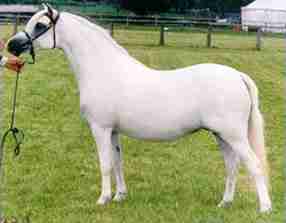
The
Welsh Mountain Pony needs little introduction. Bred in the mountains and wild
regions of Wales for many generations, their acknowledged beauty does not mean
they are merely a "pretty toy" - centuries of "survival of the
fittest has ensured the sound constitution, iron hard limbs and great intelligence
which, combined with the legendary Welsh temperament, makes the ideal child’s
pony of today. They can be seen ridden and driven all over the World - equally
at home in the cold of Canada and Sweden or the heat of Africa and Australia.
The head of the Mountain Pony should be small, with neat pointed ears, big
bold eyes and a wide forehead. The jaw should be clean cut, tapering to a small
muzzle; the silhouette may be concave or "dished" but never convex or
too straight. The neck should be of a good length and well carried with shoulders
sloping back to a clearly defined wither. The limbs must be set square with good
flat bone and round dense hooves. The tail set high and gaily carried.
Action
must be straight both in front and behind, quick and free with hocks well flexed.
THE
WELSH PONY (Section B)
Height: Not exceeding 13.2 h.h. (137cms).
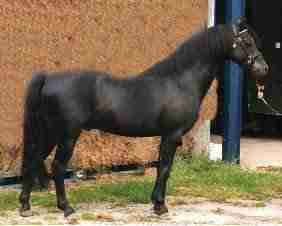
The
general description of the Welsh Mountain Pony can be applied to the Welsh Pony,
with greater emphasis being placed on riding pony qualities whilst still retaining
the true Welsh type of quality with substance.
For generations these ponies
were the hill farmers’ main means of transport, herding sheep and wild ponies
over rough and mountainous country. They had to be hardy, balanced and fast to
survive, which ensured that only the best were bred from these qualities, combined
with a natural jumping ability, and the temperament of their Welsh Mountain Pony
forebears make the Welsh Pony second to none in whatever field his young rider
may choose. Today they hold their own among our top class riding ponies both in
performance competitions and in the show ring.
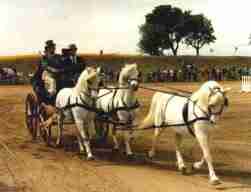
THE
WELSH PONY OF COB TYPE (Section C)
Height: Not exceeding 13.2 h.h. (137cms).

The
Welsh Pony of Cob Type is a stronger counterpart of the Welsh Pony, but with Cob
blood.
Their true worth as a dual-purpose animal has been fully realised
in recent years, and their numbers have increased accordingly.
Active, sure-footed
and hardy they are ideal for so many purposes both for adults and children.
Like all the Welsh Breeds they are natural jumpers, and they also excel in harness
- there are in fact few things that they cannot be used for.
THE WELSH COB
(Section D)
Height: No upper or lower limit.
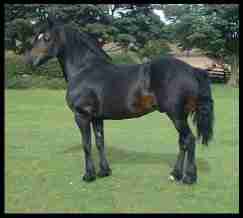
Aptly
described as "the best ride and drive animal in the World", the Welsh
Cob has been evolved throughout many centuries for his courage, tractability and
Powers of endurance.
The general character is the embodiment of strength,
hardiness and agility. The head shows great quality with pony character. Bold
prominent eyes, a broad forehead and neat well set ears. The body must be deep
on strong limbs with good "hard wearing" joints and an abundance of
flat bone. Action must be straight, free and forceful, the knees should be bent
and then the whole foreleg extended from the shoulders and as far forward as possible
in all paces, with the hocks well flexed with powerful leverage.
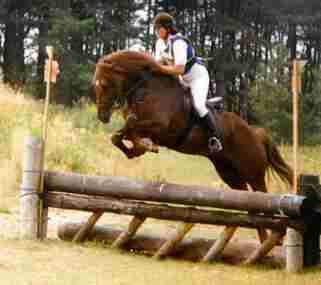
The Welsh Cob is a good hunter and a most competent performer in all-competitive
sports, in recent years they have had great success in the international driving
world. Their abilities in all spheres are now fully recognised throughout the
world.
THE WELSH PART-BRED
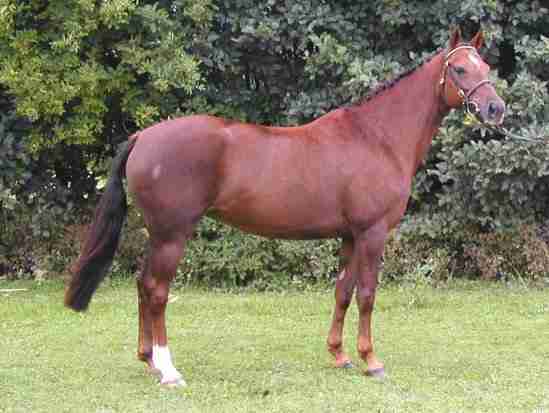
Although
the animals entered in all four sections of the Stud Book vary in size and substance,
all show evidence of their common ancestor, The Mountain Pony. The best inherit
the strong constitution, good bone, courage, activity and equable temperament
that have led to their worldwide renown. It is therefore not surprising that they
are in such demand for crossing with other breeds.
A pony, horse or cob -
either male or female - will be accepted for entry in the Welsh Part-Bred Register
provided it is not less than 25% of registered Welsh blood within two generations,
calculated from either sire or dam, or cumulative from both.
FOUNDATION
STOCK